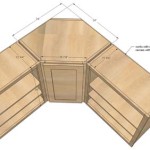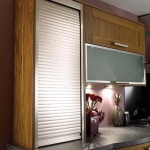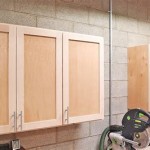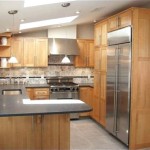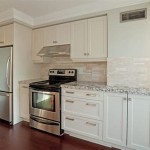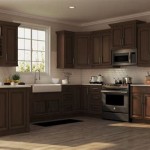How Do I Know What Type of Kitchen Cabinets I Have?
Determining the type of kitchen cabinets present in a home is crucial for various reasons, ranging from planning renovations and repairs to accurately assessing the value of a property. This process involves examining various aspects of the cabinet construction, style, materials, and hardware. A systematic approach ensures proper identification, which is vital for making informed decisions regarding maintenance, replacement, or upgrades.
The identification process requires a meticulous examination of various cabinet characteristics. Identifying the type of cabinet construction is a primary step, followed by discerning the door style, wood species or material, and finishing techniques. Evaluating the hardware, such as hinges, knobs, and pulls, offers further insights into the overall design and quality of the cabinetry. This comprehensive approach contributes to a more accurate and complete understanding of the cabinets present.
Examining Cabinet Construction
Cabinet construction significantly impacts both the structural integrity and the aesthetic appeal of a kitchen. Different construction methods offer varying degrees of durability and visual characteristics. Understanding these construction types is paramount in accurately identifying the kind of kitchen cabinets in a home.
Framed Cabinets: Framed cabinets are characterized by a face frame attached to the front of the cabinet box. This frame, typically made of solid wood, adds stability and provides a surface for attaching doors and drawers. Hinges are usually mounted directly to the face frame. The frame provides a visual border around the door, creating a traditional aesthetic. Within framed cabinets, there are sub-categories based on the overlay: full overlay, partial overlay, and inset. Full overlay cabinets minimize the visibility of the face frame, creating a more contemporary look. Partial overlay cabinets, sometimes called standard overlay, leave a significant portion of the face frame visible. Inset cabinets feature doors and drawers that fit flush within the face frame, offering a clean, high-end appearance.
Frameless Cabinets: Frameless cabinets, also known as European-style cabinets, lack a face frame. The doors and drawers attach directly to the cabinet box, which is typically constructed from thicker material, usually plywood or particleboard. This construction method maximizes interior storage space and creates a sleek, modern aesthetic. Hinges are specialized for frameless construction and attach to the interior sides of the cabinet box. The absence of a frame allows for easier access to the contents of the cabinet. Alignment is critical with frameless cabinets, as even slight misalignments are easily noticeable. The edge banding, which covers the exposed edges of the cabinet box material, can be a defining feature of frameless cabinets, and is generally made of PVC, ABS plastic or wood veneer.
Identifying Cabinet Construction: Distinguishing between framed and frameless cabinets is relatively straightforward. The presence of a face frame immediately identifies the cabinet as framed. Conversely, the absence of a face frame, with doors and drawers directly attached to the cabinet box, indicates a frameless construction. Examining the hinge mounting offers further clarification. Hinges attached to a face frame indicate framed cabinets, while hinges mounted to the interior sides of the cabinet box point to frameless construction.
Analyzing Door Styles and Materials
The door style and material used in kitchen cabinets contribute significantly to their overall aesthetic and functional characteristics. Various door styles cater to different design preferences, while different materials offer varying levels of durability and visual appeal. Identifying these features is critical in determining the specific type of kitchen cabinets present.
Common Door Styles: Numerous door styles exist, each with unique visual characteristics. Shaker-style doors are characterized by a five-piece design with a recessed center panel and clean, simple lines. Slab doors are flat and feature a minimalist design, popular in modern kitchens. Raised-panel doors feature a center panel that is raised above the surrounding frame, offering a more traditional look. Arched doors have a curved top, adding a touch of elegance. Glass-front doors incorporate glass panels, allowing visibility into the cabinet's contents. Beadboard doors feature vertical grooves, adding texture and visual interest.
Common Cabinet Materials: The material used in cabinet construction significantly impacts its durability, appearance, and cost. Solid wood offers a classic look and can be stained or painted. It is considered a premium material. Plywood is an engineered wood product made from layers of wood veneer glued together. It is stable and resistant to warping. Particleboard, also known as furniture board, is composed of wood chips and resin. It is a cost-effective option but less durable than solid wood or plywood. Medium-density fiberboard (MDF) is another engineered wood product made from wood fibers and resin. It is smooth and stable, making it a good choice for painted cabinets. Thermofoil is a vinyl laminate applied to MDF or particleboard, offering a durable and easy-to-clean surface. Laminate is a thin layer of decorative material applied to a substrate, such as particleboard or MDF. It is available in a wide range of colors and patterns.
Identifying Door Style and Material: Determining the door style involves carefully examining the design of the door. Note the presence of panels, frames, and any decorative elements. Identifying the material requires a closer look at the cabinet's construction. Examine the exposed edges and interior surfaces to determine if the cabinet is solid wood, plywood, particleboard, MDF, or a combination of materials. Paying attention to the grain pattern and density of the material can help in accurate identification.
Evaluating Hardware and Finishing Techniques
The hardware and finishing techniques applied to kitchen cabinets contribute to their overall functionality and aesthetic appeal. Examining these aspects provides further insights into the type and quality of the cabinets. Hardware includes hinges, knobs, pulls, and other functional components, while finishing techniques encompass the methods used to protect and enhance the cabinet's surface.
Types of Hardware: Cabinet hardware plays a crucial role in both the function and appearance of the cabinets. Hinges allow the doors to swing open and closed, with different types offering varying degrees of adjustability and durability. Knobs and pulls provide a grip for opening drawers and doors, and are available in a vast array of styles and materials. Drawer slides allow drawers to smoothly open and close, with options ranging from basic side-mount slides to soft-close, full-extension slides. Other hardware components include latches, catches, and decorative elements that contribute to the overall design.
Finishing Techniques: The finishing technique applied to a cabinet's surface significantly impacts its appearance and protection. Staining enhances the natural grain of wood, adding depth and warmth. Painting provides a uniform color and can be applied to both wood and engineered wood products. Glazing involves applying a thin layer of tinted material to highlight details and create an antique look. Distressing involves intentionally creating imperfections to give the cabinets a worn, aged appearance. Varnishing or lacquering provides a protective coating that enhances the durability and luster of the finish.
Identifying Hardware and Finish: Examine the hardware to determine its style, material, and functionality. Note the type of hinges, knobs, and pulls. Observe the drawer slides to determine their type and quality. Analyze the cabinet's surface to determine the finishing technique used. Look for signs of staining, painting, glazing, or distressing. Assess the quality of the finish and its overall appearance. This detailed examination will help in accurately identifying the hardware and finishing techniques, providing valuable information about the type and quality of the cabinets.
By meticulously examining cabinet construction, door styles and materials, and hardware and finishing techniques, individuals can effectively determine the type of kitchen cabinets present in a home. This comprehensive approach ensures accurate identification, which is essential for making informed decisions regarding renovations, repairs, and property valuation. The information gathered through this process empowers homeowners and professionals alike to better understand the characteristics of their kitchen cabinets.

How Do I Know If Have Laminate Cabinets Metropolitan Countertops

Choosing Quality Kitchen Cabinet Material Neil Kelly

How Do You Tell If Your Cabinets Are Laminate Cabinetdoormart Com

Take This Quiz To Find Out How Many Kitchen Cabinets You Need

9 Essential Kitchen Cabinet Types Fitzgerald Kitchens

3 Diffe Types Of Kitchen Cabinets Pros Cons

About Two Tone Kitchen Cabinets Wolf Home S

Wood Modern Designer Aluminium Kitchen Cabinet

Traditional Cabinets Vs Modern Style

A Guide To Standard Kitchen Cabinet Types Cabinetselect Com
Related Posts

